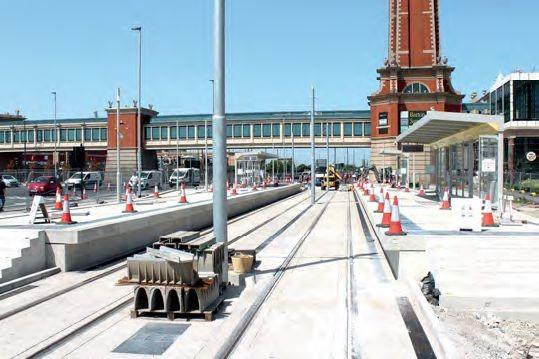
LIGHT RAIL and tram usage in England reached record levels during 2018-19, according to statistics released by the Department for Transport.
There were 272.4 million passenger journeys made on the eight systems in England, a 1.9% increase on the previous year, and a 44% increase over the 10-year period since 2008-09.
Passenger journeys increased on all but two of the systems, these being London Tramlink and Sheffield Supertram. On London Tramlink DfT attributes the 1.3% fall in journeys to a warehouse fire which partially closed the network for six days. Sheffield Supertram saw a 3.1% reduction in the number of journeys, despite being the only system to see expansion during the year in the form of the new tram-train service between Sheffield and Rotherham, which started carrying passengers last October. The restart of a five-year rail replacement project and associated closures is thought to have impacted Supertram’s passenger numbers.
The strongest growth was at Manchester Metrolink (6.1%), which benefited from an enhanced timetable with additional services on the Ashton-under-Lyne route, and Nottingham Express Transit (5.7%), which has seen sustained growth since the launch of its Phase Two extensions in August 2015.
The Docklands Light Railway accounted for nearly 45% of total journeys, having carried 121.8 million passengers during the year.
Light rail and tram revenue grew by 3.9% during the year, reaching £386.0 million, with the strongest growth at Manchester Metrolink, West Midlands Metro and Nottingham Express Transit.
Concessionary revenue was up 4.5% over the year; of the eight systems Sheffield Supertram has the highest proportion of concessionary journeys (29.1%), albeit this fell from 32.5% the previous year.
The DfT statistics do not consider the two systems in Scotland (Edinburgh Trams and the Glasgow Subway). In January Edinburgh Trams reported 7.3 million passenger journeys were recorded during 2018, an increase of 10% on the previous year. It highlighted increased capacity through introduction of additional ‘queue buster’ services during the morning and evening peaks.
In 2018-19 the Glasgow Subway recorded 13.2 million passenger journeys, up 3.7% on the previous year and the first time in 10 years patronage had exceeded 13 million passengers.
